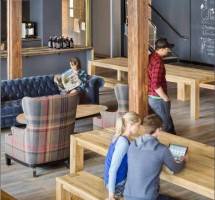September 15, 2016
Call for work life balance to help preserve relationships and health 0
 More than a third of UK workers (35 percent) say that their work schedule is detrimental to their relationship with their partner, nearly one in five (18 per cent) say their job has caused arguments, and eight per cent admit that work was a major factor in the breakdown of their relationship. This is according to research, commissioned by Coople that suggests the extent to which work is ruining relationships, causing arguments with partners and even taking a toll on sex lives. Nearly one in 10 (nine per cent) say the pressures faced at work has had a negative impact on their sex life and one in five (20 per cent) report their work has led to a decline in their health and wellbeing, citing stress and depression. Unsurprisingly, the survey also found that 54 per cent of people value a good work life balance in a job the most, above wages, career progression, doing something meaningful in their work or any employee benefits.
More than a third of UK workers (35 percent) say that their work schedule is detrimental to their relationship with their partner, nearly one in five (18 per cent) say their job has caused arguments, and eight per cent admit that work was a major factor in the breakdown of their relationship. This is according to research, commissioned by Coople that suggests the extent to which work is ruining relationships, causing arguments with partners and even taking a toll on sex lives. Nearly one in 10 (nine per cent) say the pressures faced at work has had a negative impact on their sex life and one in five (20 per cent) report their work has led to a decline in their health and wellbeing, citing stress and depression. Unsurprisingly, the survey also found that 54 per cent of people value a good work life balance in a job the most, above wages, career progression, doing something meaningful in their work or any employee benefits.








 It is no longer a question of whether one of the world’s major economies will introduce a universal basic income for all of its citizens, but when. Over the weekend, the leader of the UK’s Labour Party Jeremy Corbyn announced in
It is no longer a question of whether one of the world’s major economies will introduce a universal basic income for all of its citizens, but when. Over the weekend, the leader of the UK’s Labour Party Jeremy Corbyn announced in 























August 31, 2016
Addressing the five negative influences on organisational culture 0
by Matias Rodsevich • Comment, Flexible working, Knowledge, Workplace
(more…)